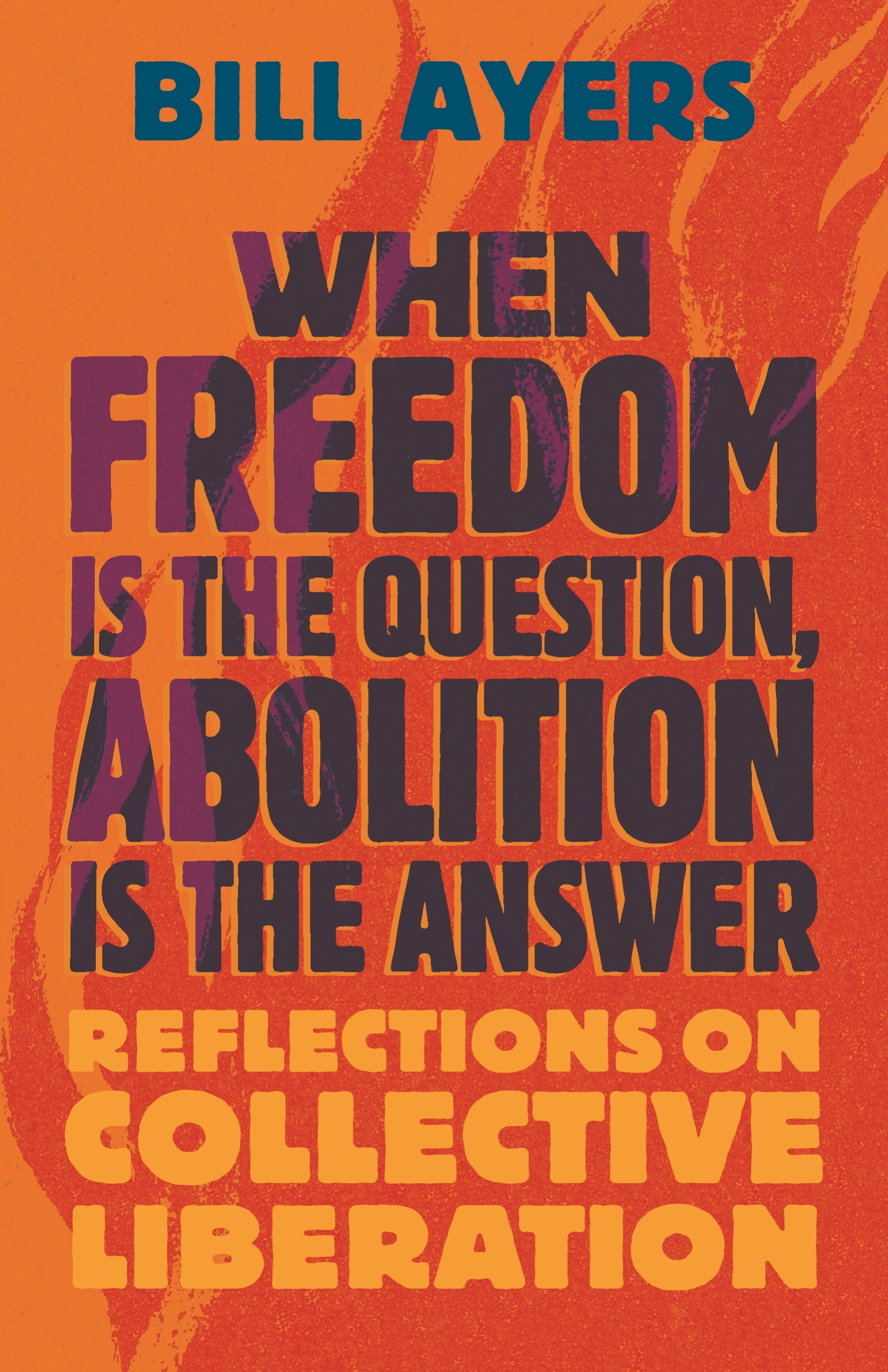The logic of prison abolition was first explained to me by the great freedom fighter Angela Y. Davis: Prison is not just a place, she said, it’s an ideology. The ideology limits our imaginations and shuts down our capacity to think more broadly and more bravely. We need to wonder what might lie beyond prison, beyond making a better or more functional prison system—the focus of too many reform conversations—and initiate massive conversations about decarceration, that is, bringing folks home and shutting prisons down. We have to think of ways to close the front door—the pipeline feeding the beast as more and more people are funneled in—and open wide the back door.
Mass incarceration—the caging and control of criminalized populations and marginalized people deemed disposable—is a major part of the afterlife of slavery, and prison abolition is the next step in that long historic project of abolition and Black freedom. And, as we imagine dramatic change, we should also anticipate future attempts to contain and control, for just as Jim Crow followed abolition, and mass incarceration followed Jim Crow, some evil expression of white supremacy and Black containment yet unseen lurks just around the corner.
The “prison nation” is an intolerable abomination. Once you see it, you can’t unsee it, and joining the insurgency becomes an urgent necessity. Modern misdemeanor law can be traced directly to the Black Codes after slavery that criminalized ordinary actions (loitering, staying out late at night) precisely to control formerly enslaved people. The explosive growth of the prison population followed close on the heels of the powerful modern Black Freedom Movement, criminalizing whole communities and exacting collective punishment.
When talking about prison abolition, I often like to begin with an exercise in the form of a question: Can we—right now—generate a thousand alternatives to caging people? It turns out we can, so let’s . . .
- build “Community Restorative Justice” projects—spaces where perpetrators and victims can meet with peers and neighbors, community organizers and social workers, to discuss how to repair the harm inflicted by misbehavior.
- redirect all misdemeanor offenses away from criminal court with its attendant culture of cruelty, humiliation, and punishment toward counseling, rehab, or anger management for some, and technological support (a simple breathalyzer device, for example, attached to a vehicle before it can be driven) for others.
- do away with “truth-in-sentencing,” mandatory minimum sentences, “three strikes you’re out,” sentence enhancements, money bail, and other punitive measures that serve to swell the prison population.
- restore or create opportunities to reduce time inside with policies like day-for-day good time practices.
- immediately release all aging people in prison—say, anyone over sixty, who has done twenty years or more in prison—and grant mass commutation to entire categories of imprisoned people: women resisting violence, people possessing drugs, folks convicted on the testimony of dirty cops, people convicted of crimes when they were minors and who have served significant sentences, and more.
- develop a prisoner’s cooperative to operate the institutions, making decisions collectively about all matters concerning food, health care, education, and social services, the organization of work and leisure, and relations with outside institutions including religious, educational, and business organizations.
Some of this may sound a bit like fiddling with the machinery of caging, but let’s not be dogmatic hard-liners when actual people could breathe more freely with just a bit of tinkering. The goal is not to reform or compromise enslavement, subjugation, abuse, cruelty, persecution, avariciousness, exploitation, predation, and oppression, so, OK, tinker, but let’s never lose sight of the north star: an end to prisons—abolition.
Similarly, talk of “defunding the police” is ridiculed in the commercial press, but we should ask ourselves, what qualities would make policing in a free and democratic society different from policing in an unfree or authoritarian society? Or, what is the link between aggressive and expensive policing and public safety? Is there any evidence that caging people makes us safer? And then we can perform once more the exercise we did regarding prison abolition, brainstorming a thousand steps toward police abolition:
- Get guns off the streets, including guns in the hands of state agents.
- Create massive public works programs.
- Build homes for the unhoused.
- Bring the endowments of all private schools, colleges, and universities under public and democratic control, and organize the redistribution of those resources toward a system of free quality education for all.
- Use a public-health frame to rethink issues of violence.
- Grant guaranteed income supports to the unemployed.
- Provide a guaranteed living-wage stipend, free housing, and good childcare to anyone living at or below the poverty line and attending high school or community college.
- Create a system of single-payer, universal health care.
- Generously create and support community mental health programs.
- Decriminalize illegal drugs and expand drug treatment centers to meet the real needs of people caught in the grip of addiction.
The way things are is not the way things have to be. We have choices to make and worlds to build. And none of this is possible in the absence of collective action and a social movement for radical transformation—we need to work collectively on a vision as part of the fight for abolition. We can abolish the ironclad logic of misbehavior = police = punishment = the cage, which leads onward and downward without end, and replace it with a logic of compassion and repair with incarceration as the last and least worthy alternative before us. Think of prison as the 1,001st option—the last resort and not the default choice. We begin to frame the problem in different terms: recovery and restoration, forgiveness and redemption, grace and healing, public health and human rights, respect and faith. Alternatives liberate all of us from our own culturally imposed mental prisons, our dimmed consciousness and constrained imaginations. Without alternative ways of thinking and being, we become destined to be confined in a lockup state of mind.
More from our decarceral brainstorm
Every week, Inquest aims to bring you insights from people thinking through and working for a world without mass incarceration.
Sign up for our newsletter for the latest.
Newsletter
Perhaps because we’ve lived so long in a culture of discipline and punish, or because copaganda has been so effective, or because traditional Puritanism became ravenous once again and demanded to be fed, many folks hardly noticed as we slipped down the proverbial slope that Davis, Ruth Wilson Gilmore, Erica Meiners, Bernardine Dohrn, Beth Richie, Dylan Rodriguez, and others predicted, and we woke up living in a full-blown prison nation. That fact points to the true and deep-seated reason underneath the phenomenon of mass incarceration: white supremacy dressed up in modern garb.
Just as slavery was a defining fact of U.S. life from the seventeenth to the nineteenth centuries, racialized captivity and mass incarceration are central features in the United States today. And just as the abolition of slavery was unimaginable to most Americans then, a society with no prisons or no police is difficult for many people to wrap their heads around now. But try it—imagine a world without prisons. When enough of us become liberated from the dogma of incarceration and the totalizing logic of captivity and control, we might mobilize ourselves to dive into the hard work of building a political movement to empty the prisons and shut them down. We may look back, just as we look back at slavery, with astonishment and anguish as we realize that the prison–industrial complex was a bad choice: it generated super-profits for a few while it vitalized white supremacy, ruined millions of human lives, devastated social capital, destroyed entire communities, and diminished our society. Slavery—the “peculiar institution”—made cruelty customary and callousness conventional, everyone forced to witness and embrace it as such, or to shut their eyes tight as communities were made more hard-hearted and hateful. Just as the abolition of slavery liberated enormous energy toward a more generous and compassionate social order, so a world without prisons will create the conditions for a more just and decent community for all.
Gilmore argues that the abolitionists of today, standing on the shoulders of the abolitionists who preceded us, are required to change just one thing: everything. Abolition is not best understood as a deletion or an erasure, but rather as a collection of creative and complex acts of “world-building.” What kind of world would we need to build in order to have no slavery? our forebears asked. And what kind of world could we begin to create today that would render prisons and police and militarism obsolete, predation and exploitation relics of a cruel past? To do that, everything would have to change. Everything.
And abolition work—changing everything—is the practice of freedom.
Excerpted from When Freedom Is the Question, Abolition Is the Answer: Reflections on Collective Liberation by Bill Ayers (Beacon Press, 2024). Reprinted with permission from Beacon Press.
Image: Marija Saric/Unsplash


